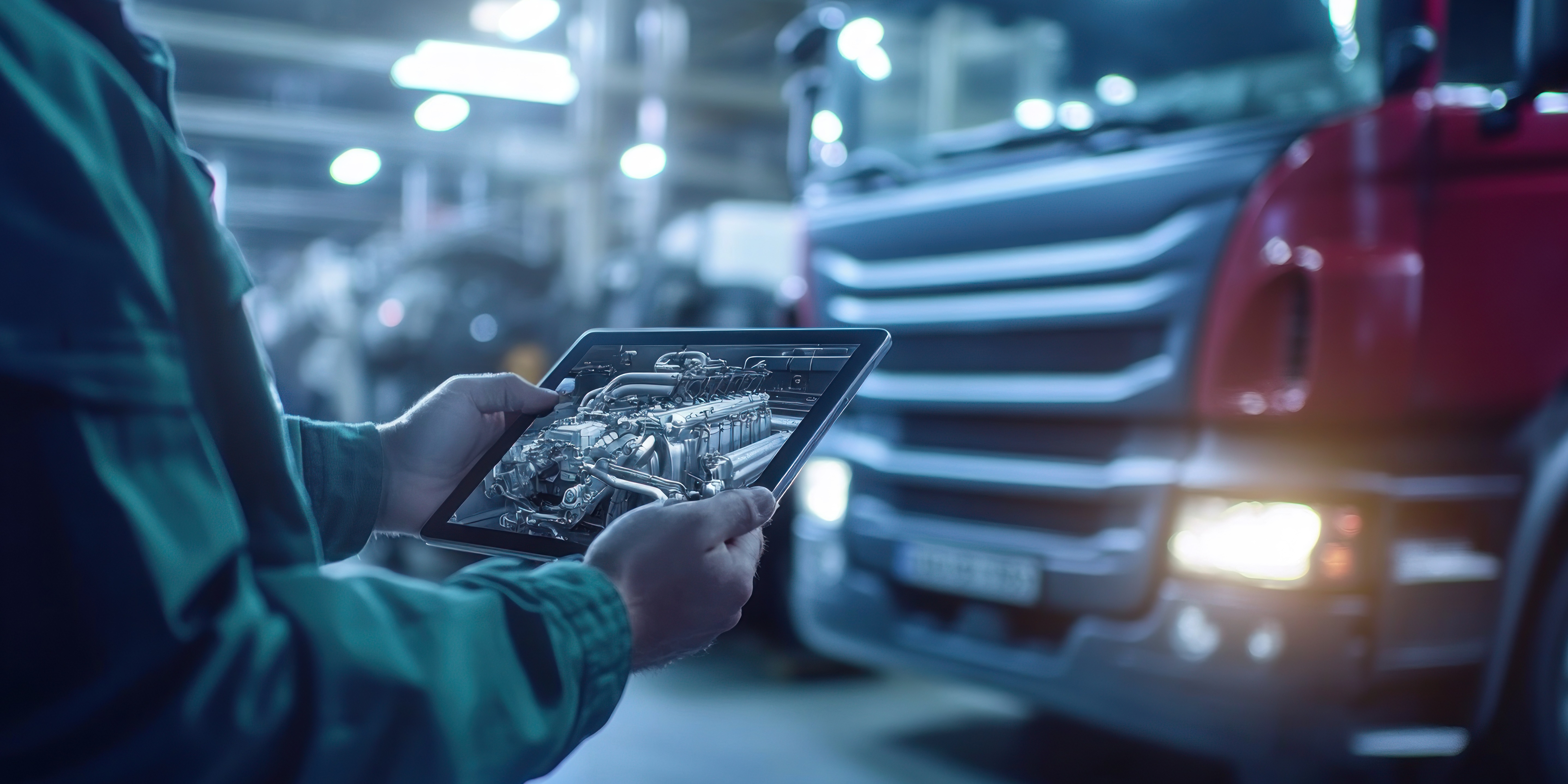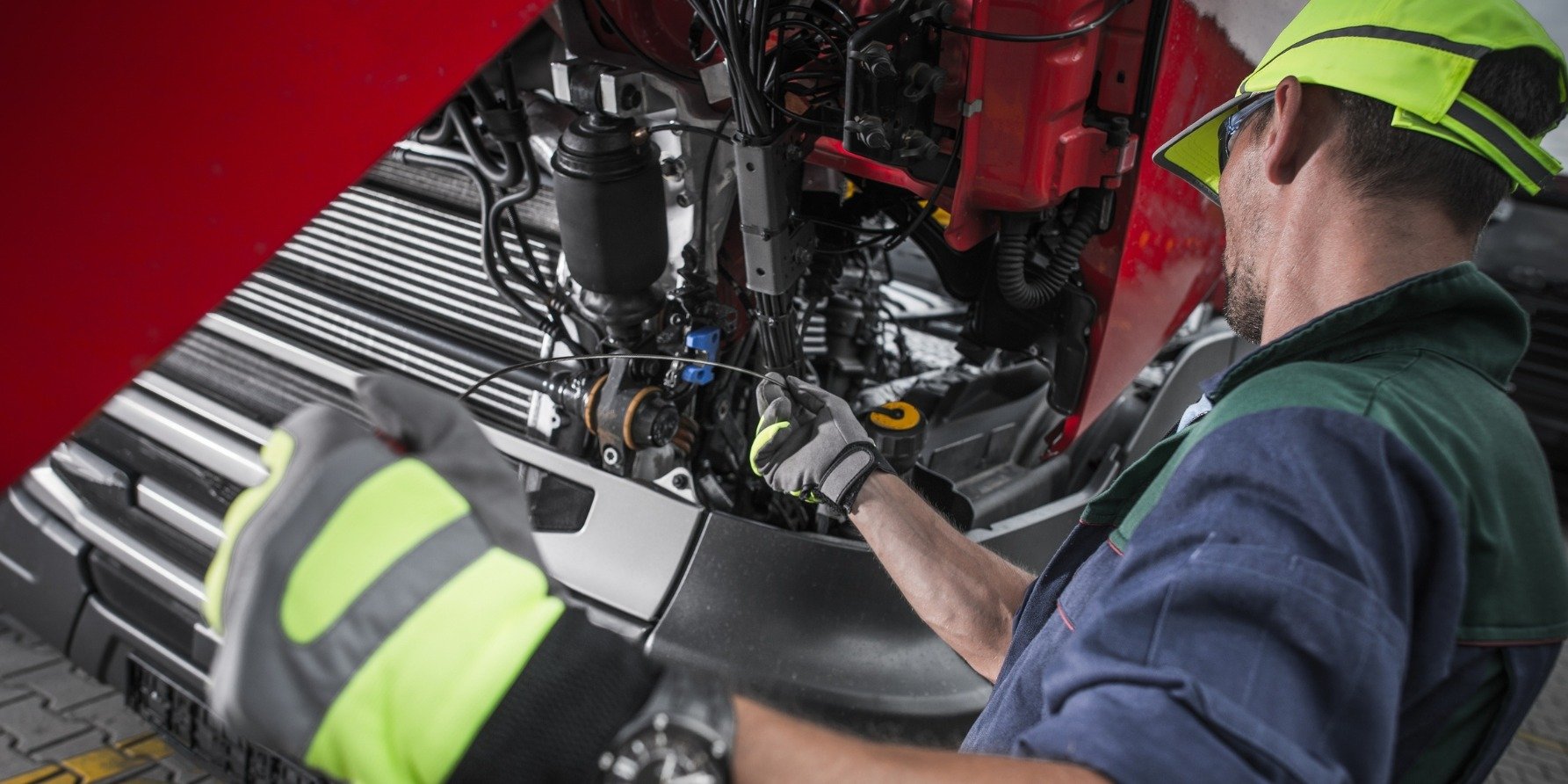
Heavy-Duty Repair in 2025: The No-BS Playbook to Win
The heavy-duty world is changing fast. Electric and “smart” trucks are rolling in, rulebooks keep thickening, parts aren’t getting cheaper, and the technician bench is thinner than ever. Meanwhile fleets expect faster turnarounds, rock-solid compliance, and real-time communication. The verdict from industry veterans is blunt: shops that adapt will thrive; shops that cling to paper and old habits will get left behind.
This guide breaks down the biggest headwinds for independent and mid-sized diesel, truck, trailer, fleet, and equipment shops in 2025; and the practical moves to turn each one into an advantage. We’ll also show where a purpose-built platform like ShopView helps you work faster, capture more billables, and keep customers’ assets earning.
1) Evolving Truck Technology (EV, ADAS & Always-On Data)
Modern trucks are rolling computers. Battery-electric and hybrid units are moving from pilot to production runs. Emissions systems are more complex. ADAS (collision mitigation, lane-keeping, camera/radar stacks) now shows up on Class 8. And every fleet telematics box is blasting fault codes and condition data 24/7.
What this means for your shop
- Diagnostics is the bottleneck. Sorting signal from noise on late-model trucks takes better tooling and current software, not just a generic code reader.
- New safety protocols. EV and high-voltage service requires PPE, insulated tools, and procedures you can’t “wing.”
- Calibration work is growing. After front-end, glass, or body repairs, ADAS systems often require precise calibrations; or you’re subletting the job.
Moves that win
- Name a tech champion for each frontier. One “EV/HV safety” lead and one “advanced diagnostics/ADAS” lead. Give them time and budget for OEM/industry training.
- Upgrade your scan stack. Keep subscriptions current; standardize a workflow that ties scan results directly to a work order and estimate.
- Tap the data before the truck arrives. Pull telematics fault codes into your queue, pre-stage parts, and turn “surprises” into planned work.
Where ShopView helps: Integrations with fleet telematics (e.g., Samsara, Geotab) push active faults and DVIR defects straight onto a unit’s record and into a service request, so you diagnose sooner and order right the first time.
2) Regulatory & Compliance Overload (DOT, DVIR, Emissions, OSHA)
Compliance isn’t side work anymore; it’s a daily job. Emissions standards tighten, DOT inspections don’t forgive, DVIRs must be closed out, and auditors expect instant records. Do this on paper and you burn hours and invite mistakes.
What this means for your shop
- More admin, more risk. Miss a DOT due date, lose a DVIR defect, or fumble a PM interval and you jeopardize contracts (and invite fines).
- Fleets expect transparency. They want complete digital histories, not a file folder and a handshake.
Moves that win
- Digitize the compliance loop. DOT forms, DVIR close-outs, PM schedules, recall docs; store with the unit and tie to WOs. Auto-schedule the next due dates.
- Make it automatic. Feed driver inspections and telematics alerts directly into your system so service requests spawn themselves.
- Assign a “compliance owner.” Someone on your team runs monthly reviews and spot-checks. Five minutes now saves a five-figure headache later.
Where ShopView helps: e-DVIR intake, PM planners, DOT templates, and audit-ready service histories inside one system. Set recurring tasks (extinguishers/eyewash checks, spill-kit audits) like any other job and keep proof at your fingertips.
3) The Technician Shortage (Hire Smarter, Retain Longer, Do More With Less)
The bench is thin. Over 65% of shops report being understaffed, with roughly one in five tech positions unfilled. Wages are rising, veterans retire, and the next generation wants modern tools and a clear path forward.
What this means for your shop
- Capacity is capped. Without process and tooling, added demand just creates chaos.
- Retention is culture + tools. Messy clipboards, lost WOs, and late-night billing push good techs out the door.
Moves that win
- Upgrade the workday. Digital WOs, tap-to-clock on jobs, next-up queue visibility, parts that are ready when the bay opens. Reduce the friction; raise billed hours.
- Grow your own. Apprenticeships and mentorships work. Map a path from lube tech to diagnostician and fund relevant certs.
- Pay for performance without burnout. Thoughtful bonus/flat-rate models plus clean, safe, well-equipped bays beat a higher base in a chaotic shop.
Where ShopView helps: A technician app for time on/off each task, canned jobs and parts kits, and live workload visibility; so techs wrench more and wait less. Reporting shows utilization and stalls (e.g., “waiting on parts/approval”) so you fix the real bottlenecks.
4) Parts, Pricing & Inventory: Where Profit Leaks (or Grows)
Supply chains are better than 2022, but not “easy.” Prices fluctuate. ECMs, sensors, and aftertreatment bits still spike or backorder. Inside many shops, spreadsheets and guesswork create ghost stock, duplicate orders, and unbilled parts. That’s margin walking out the door.
What this means for your shop
- Downtime you don’t need. Tear-down starts, the bin is empty, the truck sits, the customer fumes.
- Cash trapped on shelves. Overstock slow movers; stock out fast movers. Lose space and money.
- Unbilled parts. A small leak that becomes six figures a year.
Moves that win
- Integrate catalogs and buy smarter. Check multiple suppliers’ price/stock from the WO screen; order electronically; keep alternatives handy.
- Set min/max by usage. Use the last 6-12 months to set pars, bulk the fast movers, and JIT the expensive/slow ones.
- Barcode the top SKUs. Receive → bin → pick → bill with scanners so every part hits the invoice.
- Audit monthly. Kill dead inventory; convert it to cash or credit.
Where ShopView helps: Live multi-location inventory, low-stock alerts, auto-POs, vendor integrations, and “parts used must be billed” safeguards that stop leakage. Usage analytics surface what to stock; and what to stop buying.
5) Rising Costs & Customer Demand for Speed (Turn Time Is the Battleground)
Overhead is up. Parts and pay are up. Fleets judge you on hours, not just outcomes. In many shops, it still takes 7-10 days from open RO to invoice. That won’t fly in 2025.
What this means for your shop
- Time is revenue; for you and your customer. A day saved on cycle time is a day of revenue for the fleet and another job through your bay.
- Communication wins deals. “In the dark” is a deal-breaker. Photos + status + instant approvals keep jobs moving and customers calm.
Moves that win
- Digitize approvals and invoice same-day. Text/email estimates with photos; tap-to-approve; close and bill when the work is done. Days sales outstanding (DSO) drops and cash flow improves.
- Expose the queue. A live board shows what’s waiting on parts/approval so you attack idle time first.
- Stand up mobile. Field service absorbs overflow, captures emergency work, and often commands premium labor rates.
- Review labor rates more than annually. Tie adjustments to input costs and communicate early with fleet accounts.
Where ShopView helps: Real-time schedule/dispatch, customer messaging with photos, one-click estimates, and instant invoicing. A customer portal lets fleets see status and histories without calling the counter.
6) The Digital Divide: From “Nice-to-Have” to Non-Negotiable
Running heavy-duty on paper (or generic car-shop software) used to be survivable. Not anymore. Today’s winners run a connected, purpose-built, cloud platform as the system of record.
What “good” looks like
- Live status for every WO, bay, and tech; no shouting across the floor.
- Estimates in minutes; invoices the day jobs close.
- Tech time tracked to the minute; utilization and efficiency visible by the hour.
- Inventory that mirrors reality; no ghost stock, no unbilled parts.
- e-DVIR and telematics feed your queue; PMs never sneak up.
- Accounting sync (no double entry) and KPIs that actually drive decisions.
- Multi-location control from one screen.
Where ShopView helps: Built for diesel, truck, trailer, fleet, and equipment repair; multi-asset WOs, PM schedules, DVIR/telematics, cores/lot tracking, vendor catalogs, accounting sync, mobile/field service, and enterprise reporting in one workflow. Shops switching off whiteboards routinely report faster turnarounds, double-digit revenue lifts, and six-figure billables recovered because the leaks finally get plugged.
Your 30-Day Action Plan
- Replace the whiteboard. Go live with a digital board that flags “waiting on parts/approval.” Nothing should stall in silence.
- Barcode your top 100 SKUs. Set min/max and turn on low-stock alerts; audit slow movers and liquidate the dead weight.
- Flip approvals to digital. Send photo-driven estimates; require tap-to-approve; close tickets same-day and bill immediately.
- Wire in the data. Connect DVIR and telematics so defects/faults auto-create service requests on the right unit.
- Name your champions. One tech owns EV/HV safety, one owns diagnostics/ADAS; book their first two trainings now.
- Tune pricing. Review labor rates and parts markups quarterly; communicate updates to fleet clients with ROI language (less downtime, faster turns).
- Measure what matters. Track cycle time, tech utilization, parts leakage, and DSO weekly. Improve one metric per month.
Bottom Line: Ditch the Chaos, Keep the Uptime, Bank the ROI
2025 will reward shops that run tight, data-driven operations and equip their people with tools that remove friction. Update your rates, train for the next generation of trucks, and make software the nervous system of your business, not a stack of clipboards.
If you’re ready to eliminate parts headaches, compress turn times, and raise profit per bay with a platform built by heavy-duty people for heavy-duty work:
Book a 15-minute ShopView Demo
(see the workflow live, ask tough questions)
Or start a Free Trial and watch the chaos quiet down in your first 30 days
Fewer surprises. Faster jobs. Cleaner audits. Happier techs. More trucks back on the road, and more revenue through every bay.
.png?width=1500&height=1500&name=11%20(1).png)








.png?width=1500&height=1500&name=1%20(1).png)

%20-%20Copy.png?width=1500&height=1500&name=2%20(1)%20-%20Copy.png)



